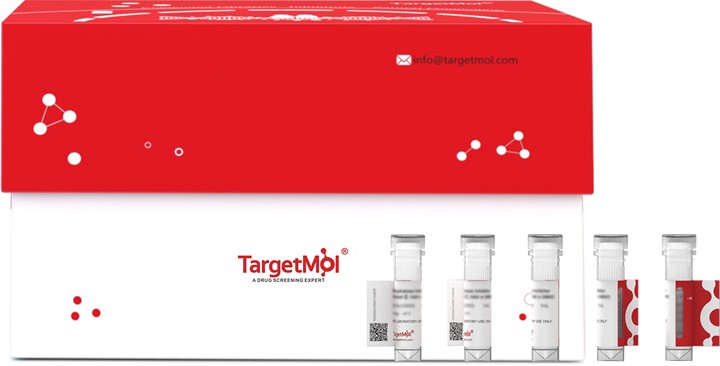 Your shopping cart is currently empty
Your shopping cart is currently empty
SPESP1 Protein, Human, Recombinant (His)
Sperm Equatorial Segment Protein 1 (SPESP1) is a member of the SPESP1 family. SPESP1 is highly expressed in the testis, where it is localized to the acrosome of postmeiotic stages of spermiogenesis; it is expressed at lower levels in the placenta and fetal lung. SPESP1 is involved in the multicellular organisimal development. Disruption of SPESP1 leads to abnormal distribution of sperm proteins resulting in a detached membrane from the equatorial segment and less fertile sperm. SPESP1 may interact with IZUMO1 and MN9 antigen and it contains an N-glycosylation site as well as several cAMP-dependent kinase, protein kinase C, and casein kinase II consensus phosphorylation sites.

SPESP1 Protein, Human, Recombinant (His)
| Pack Size | Price | USA Warehouse | Global Warehouse | Quantity |
|---|---|---|---|---|
| 5 μg | $112 | 7-10 days | 7-10 days | |
| 10 μg | $183 | 7-10 days | 7-10 days | |
| 20 μg | $292 | 7-10 days | 7-10 days | |
| 50 μg | $545 | 7-10 days | 7-10 days | |
| 100 μg | $792 | 7-10 days | 7-10 days | |
| 200 μg | $1,150 | 7-10 days | 7-10 days | |
| 500 μg | $1,900 | 7-10 days | 7-10 days | |
| 1 mg | $2,970 | 7-10 days | 7-10 days |
Product Information
| Biological Activity | Activity has not been tested. It is theoretically active, but we cannot guarantee it. If you require protein activity, we recommend choosing the eukaryotic expression version first. |
| Description | Sperm Equatorial Segment Protein 1 (SPESP1) is a member of the SPESP1 family. SPESP1 is highly expressed in the testis, where it is localized to the acrosome of postmeiotic stages of spermiogenesis; it is expressed at lower levels in the placenta and fetal lung. SPESP1 is involved in the multicellular organisimal development. Disruption of SPESP1 leads to abnormal distribution of sperm proteins resulting in a detached membrane from the equatorial segment and less fertile sperm. SPESP1 may interact with IZUMO1 and MN9 antigen and it contains an N-glycosylation site as well as several cAMP-dependent kinase, protein kinase C, and casein kinase II consensus phosphorylation sites. |
| Species | Human |
| Expression System | HEK293 Cells |
| Tag | C-6xHis |
| Accession Number | Q6UW49 |
| Synonyms | SPESP1,SP-ESP,Sperm Equatorial Segment Protein 1,Glycosylated 38 kDa Sperm Protein C-7/8,ESP,Equatorial Segment Protein |
| Amino Acid | Tyr20-Tyr350 |
| Construction | Tyr20-Tyr350 |
| Protein Purity | Greater than 90% as determined by reducing SDS-PAGE. (QC verified) |
| Molecular Weight | 58 KDa (reducing condition) |
| Endotoxin | < 0.1 ng/µg (1 EU/µg) as determined by LAL test. |
| Formulation | Lyophilized from a solution filtered through a 0.22 μm filter, containing 20 mM PB, 150 mM NaCl, pH 7.4. |
| Reconstitution | Reconstitute the lyophilized protein in distilled water. The product concentration should not be less than 100 μg/ml. Before opening, centrifuge the tube to collect powder at the bottom. After adding the reconstitution buffer, avoid vortexing or pipetting for mixing. |
| Stability & Storage | Lyophilized powders can be stably stored for over 12 months, while liquid products can be stored for 6-12 months at -80°C. For reconstituted protein solutions, the solution can be stored at -20°C to -80°C for at least 3 months. Please avoid multiple freeze-thaw cycles and store products in aliquots. |
| Shipping | In general, Lyophilized powders are shipping with blue ice. Solutions are shipping with dry ice. |
| Research Background | Sperm Equatorial Segment Protein 1 (SPESP1) is a member of the SPESP1 family. SPESP1 is highly expressed in the testis, where it is localized to the acrosome of postmeiotic stages of spermiogenesis; it is expressed at lower levels in the placenta and fetal lung. SPESP1 is involved in the multicellular organisimal development. Disruption of SPESP1 leads to abnormal distribution of sperm proteins resulting in a detached membrane from the equatorial segment and less fertile sperm. SPESP1 may interact with IZUMO1 and MN9 antigen and it contains an N-glycosylation site as well as several cAMP-dependent kinase, protein kinase C, and casein kinase II consensus phosphorylation sites. |
Dose Conversion
Calculator
Tech Support
| Size | Quantity | Unit Price | Amount | Operation |
|---|

Copyright © 2015-2025 TargetMol Chemicals Inc. All Rights Reserved.



